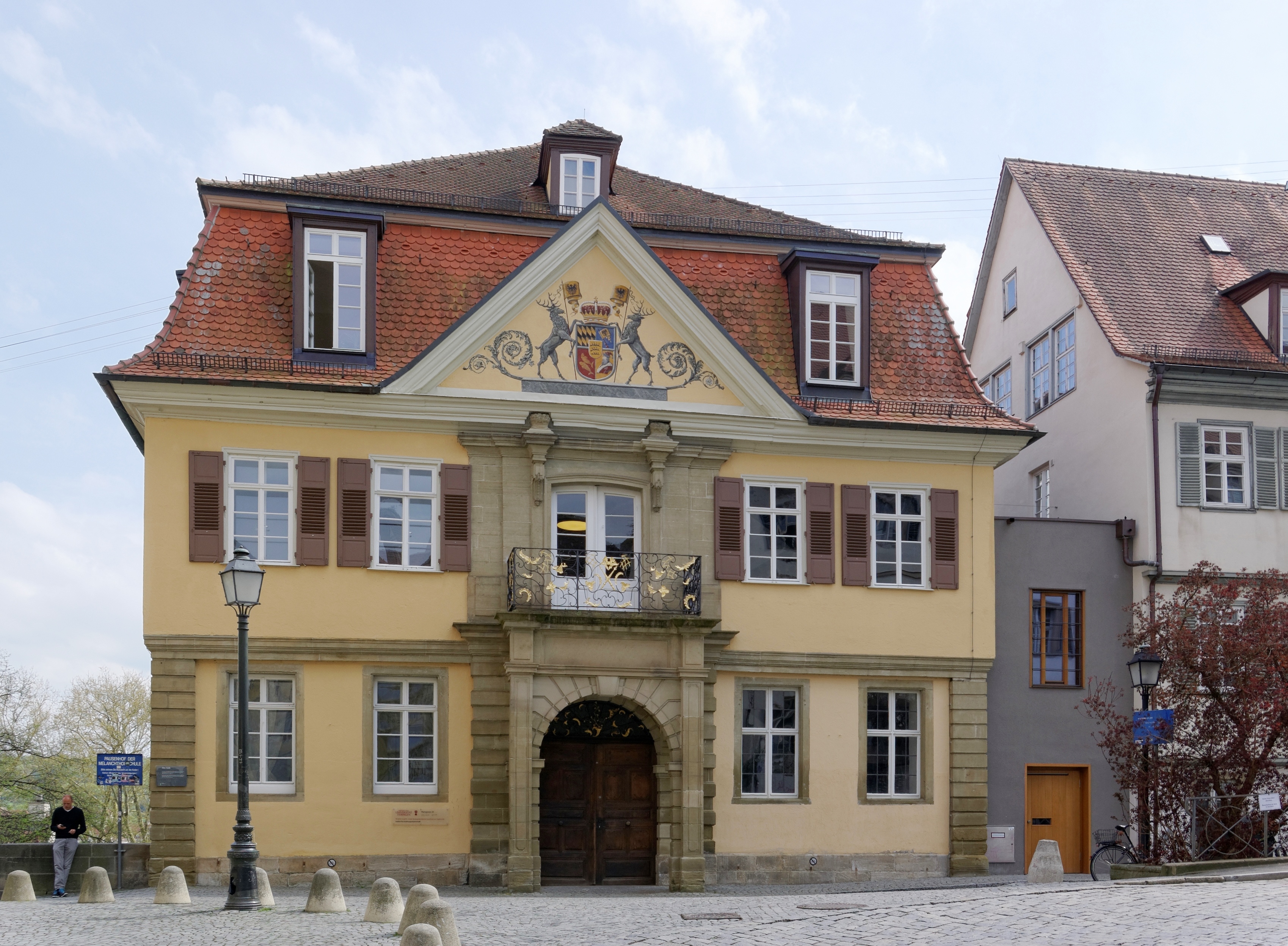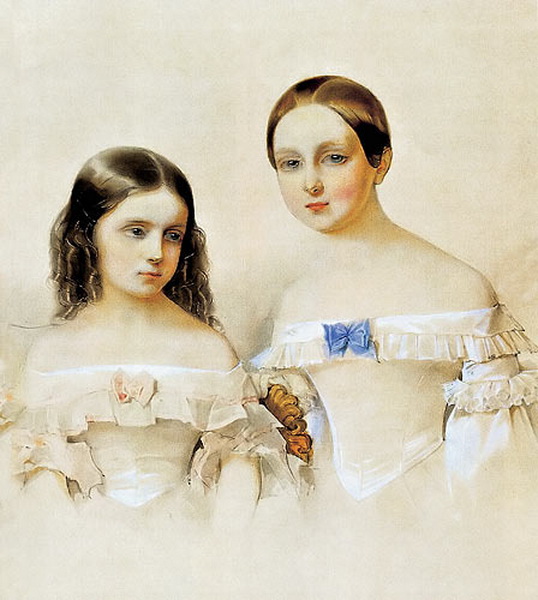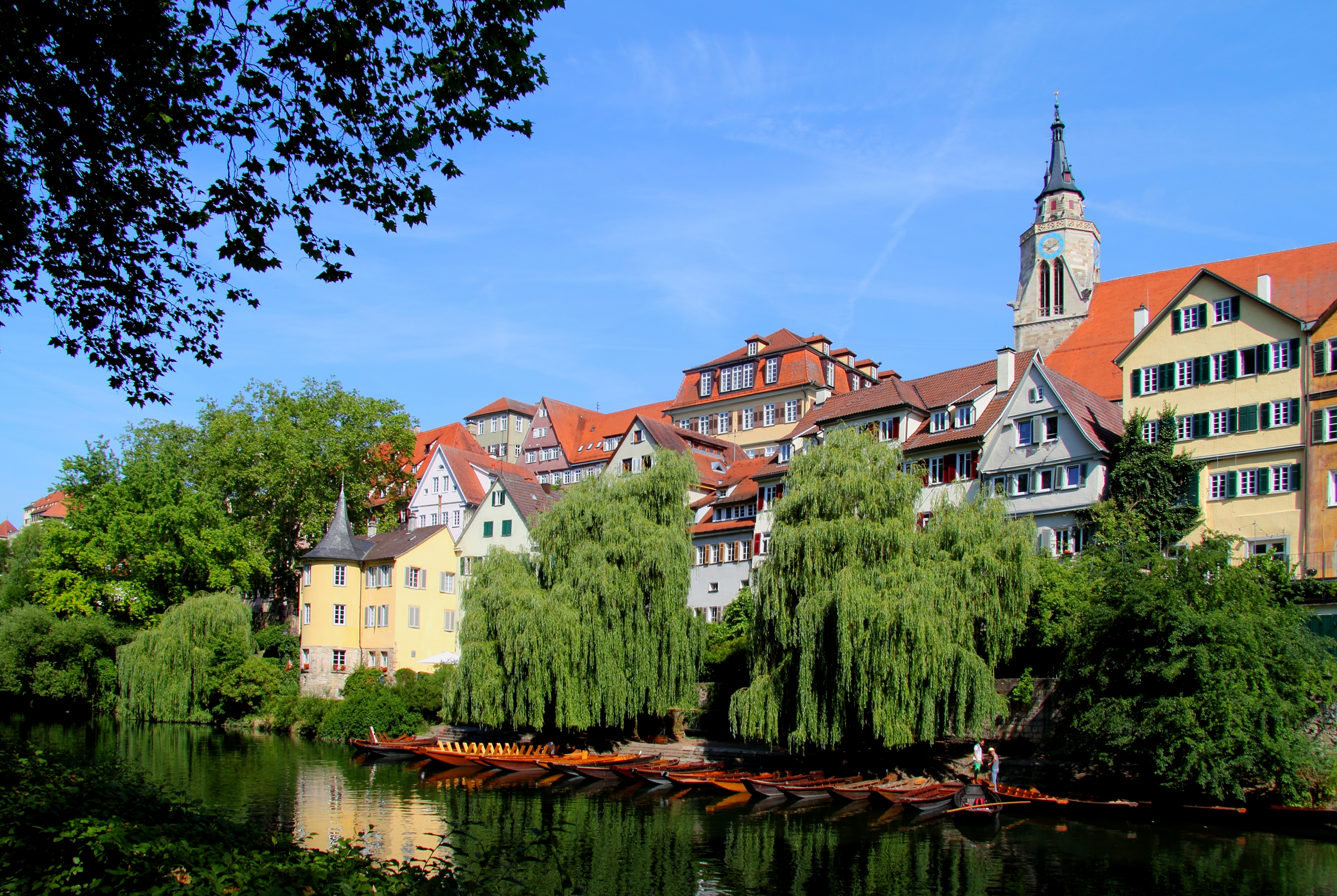|
Duke Carl Gregor Of Mecklenburg
Carl Gregor Herzog zu Mecklenburg (14 March 1933 – 23 July 2018) was a German historian of music and art. He served as director of the Museum of the Roman Catholic Diocese of Rottenburg-Stuttgart for a period of 18 years, and was noted for his books on music and art. He was a member of the former Mecklenburg ducal family. Early life and education Herzog zu Mecklenburg was born on 14 March 1933 in Remplin, Mecklenburg, in the northeast of Germany. Although he was born on the former grand ducal estate, his relative Frederick Francis IV abdicated from rule in 1918 upon the defeat of the German Empire in World War I. Thus, Herzog zu Mecklenburg (( en, Duke of Mecklenburg) serves as a surname, rather than a current title. His father was George, Duke of Mecklenburg, and his mother was Irina Mikhailovna Raievskya. Herzog zu Mecklenburg spent his early years at Remplin Palace, until the palace was burned in 1940. His family then moved to the Berlin area until the end of th ... [...More Info...] [...Related Items...] OR: [Wikipedia] [Google] [Baidu] |
Grand Duchy Of Mecklenburg-Strelitz
The Grand Duchy of Mecklenburg-Strelitz was a territory in Northern Germany, held by the younger line of the House of Mecklenburg residing in Neustrelitz. Like the neighbouring Grand Duchy of Mecklenburg-Schwerin, it was a sovereign member state of the German Confederation and became a federated state of the North German Confederation and finally of the German Empire upon the Unification of Germany, unification of 1871. After World War I and the German Revolution of 1918–19 it was succeeded by the Free State of Mecklenburg-Strelitz. Geography It consisted of two detached parts of the Mecklenburg region: the larger Lordship of Stargard with the residence of Neustrelitz to the southeast of the Grand Duchy of Mecklenburg-Schwerin and the Principality of Ratzeburg on the west. The first was bounded by the Kingdom of Prussia, Prussian provinces of Province of Pomerania (1815–1945), Pomerania and Province of Brandenburg, Brandenburg, the second bordered on the Saxe-Lauenburg, Duch ... [...More Info...] [...Related Items...] OR: [Wikipedia] [Google] [Baidu] |
University Of Tübingen
The University of Tübingen, officially the Eberhard Karl University of Tübingen (german: Eberhard Karls Universität Tübingen; la, Universitas Eberhardina Carolina), is a public research university located in the city of Tübingen, Baden-Württemberg, Germany. The University of Tübingen is one of eleven German Excellence Universities. The University of Tübingen is especially known as a centre for the study of plant biology, medicine, law, archeology, ancient cultures, philosophy, theology, and religious studies as well as more recently as center of excellence for artificial intelligence. The university's noted alumni include presidents, EU Commissioners, and judges of the Federal Constitutional Court. The university is associated with eleven Nobel laureates, especially in the fields of medicine and chemistry. History The University of Tübingen was founded in 1477 by Count Eberhard V (Eberhard im Bart, 1445–1496), later the first Duke of Württemberg, a civic ... [...More Info...] [...Related Items...] OR: [Wikipedia] [Google] [Baidu] |
George, Grand Duke Of Mecklenburg-Strelitz
George (german: Georg; 12 August 1779 – 6 September 1860) ruled the state of Mecklenburg-Strelitz as Grand Duke of Mecklenburg from 1816 until his death. Early life Duke George Frederick Charles Joseph of Mecklenburg was born in Hanover, the eighth child of Charles II, Grand Duke of Mecklenburg-Strelitz, and his first wife Princess Friederike of Hesse-Darmstadt. Following the death of his mother in 1782 his father married her sister Charlotte two years later in 1784 and the family moved from Hanover to Darmstadt. George remained in Darmstadt until 1794, when his father succeeded as the ruling Duke of Mecklenburg-Strelitz and George accompanied his father to Neustrelitz. Heir apparent Soon after arriving in Neustrelitz, George enrolled at the University of Rostock, where he studied until 1799.See entry oGeorge, Grand Duke of Mecklenburg-Strelitzin Rostock Matrikelportal After leaving university, George went to Berlin, where he lived at the Prussian court. George's sister ... [...More Info...] [...Related Items...] OR: [Wikipedia] [Google] [Baidu] |
Grigory Gagarin
Prince Grigory Grigorievich Gagarin (russian: link=no, Григорий Григорьевич Гагарин, - ) was a Russian painter, Major General and administrator. His paternal grandparents were Prince Ivan Sergeievich Gagarin and wife. His father married in Saint Petersburg in 1809 his mother Yekaterina Petrovna Sojmonova (Saint Petersburg, 23 May 1790 - Moscow, ), daughter of Pyotr Alexandrovich Soimonov and wife Yekaterina Ivanovna Boltina. Thus until the age 13 the boy was with his family in Paris and Rome and then studied in the collegium Tolomei in Siena. Grigory did not receive a formal artistic education, but took private lessons from the famous Russian painter Karl Briullov who at that time lived in Italy.Grigory Gagarin in Staratel art library In 1832 he returned to Saint Petersburg, bec ... [...More Info...] [...Related Items...] OR: [Wikipedia] [Google] [Baidu] |
Grand Duchess Catherine Mikhailovna Of Russia
Grand Duchess Catherine Mikhailovna of Russia (russian: Великая Княжна Екатерина Михайловна) (28 August 1827 – 12 May 1894), was the third of five daughters of Grand Duke Michael Pavlovich of Russia (youngest son of Emperor Paul I) and Princess Charlotte of Württemberg (known as Grand Duchess Elena Pavlovna after marriage). She was also the wife of Duke Georg August of Mecklenburg-Strelitz. She was a great philanthropist and many of the organisations she supported and helped to create still operate today. Biography Early life Catherine was born on 28 August 1827 in Saint Petersburg, Russian Empire, almost certainly in the recently completed Mikhailovsky Palace that was the primary residence of her parents. She was a younger sister of Grand Duchess Maria Mikhailovna of Russia and Grand Duchess Elizabeth Mikhailovna of Russia, as well as an older sister of Grand Duchess Alexandra Mikhailovna of Russia and Grand Duchess Anna Mikhailovna of Rus ... [...More Info...] [...Related Items...] OR: [Wikipedia] [Google] [Baidu] |
Duke Georg August Of Mecklenburg-Strelitz
, spouse = Grand Duchess Catherine Mikhailovna of Russia , house = House of Mecklenburg-Strelitz , father = George, Grand Duke of Mecklenburg-Strelitz , mother = Princess Marie of Hesse-Kassel , birth_date = , birth_place = Neustrelitz, Grand Duchy of Mecklenburg-Strelitz , death_date = , death_place = St. Petersburg, Russian Empire , religion = Lutheranism } Georg August (11 January 1824 – 20 June 1876) was a member of the House of Mecklenburg-Strelitz. Life He was born in Neustrelitz as second son of George, Grand Duke of Mecklenburg-Strelitz (1779-1860) and his wife Marie (1796-1880), daughter of Prince Frederick of Hesse-Kassel and Princess Caroline of Nassau-Usingen. His paternal grandparents were Charles II, Grand Duke of Mecklenburg-Strelitz and Princess Friederike of Hesse-Darmstadt. His sister Caroline Mariane married Frederick VII of Denmark. On 1860 his elder brother Frederick William succeeded their father as Grand Duke of Mecklenburg-S ... [...More Info...] [...Related Items...] OR: [Wikipedia] [Google] [Baidu] |
Duke Georg Alexander Of Mecklenburg-Strelitz
Duke Georg Alexander of Mecklenburg-Strelitz (russian: Георгий Георгиевич Мекленбург-Стрелицкий; 6 June 1859 – 5 December 1909) was the eldest of the two surviving sons of Duke Georg August of Mecklenburg-Strelitz and of Grand Duchess Catherine Mikhailovna of Russia. He was a great-grandson of Paul I of Russia, Emperor Paul and a cousin of Alexander III of Russia, Emperor Alexander III of Russia. Although he was a German prince of the House of Mecklenburg-Strelitz, he was raised in Imperial Russia, where he lived all his life. He followed a career as an officer in the Russian army and was Major General, Commander of the Life Guard Dragoon Regiment. Georg Alexander was a music lover, a skillful cellist and composer. In 1896 he formed a private string quartet called the ''Mecklenburg Quartet''. He contracted a morganatic marriage and his rights and inheritance passed to his younger brother Charles Michael, Duke of Mecklenburg. His four chil ... [...More Info...] [...Related Items...] OR: [Wikipedia] [Google] [Baidu] |
The New York Times
''The New York Times'' (''the Times'', ''NYT'', or the Gray Lady) is a daily newspaper based in New York City with a worldwide readership reported in 2020 to comprise a declining 840,000 paid print subscribers, and a growing 6 million paid digital subscribers. It also is a producer of popular podcasts such as '' The Daily''. Founded in 1851 by Henry Jarvis Raymond and George Jones, it was initially published by Raymond, Jones & Company. The ''Times'' has won 132 Pulitzer Prizes, the most of any newspaper, and has long been regarded as a national "newspaper of record". For print it is ranked 18th in the world by circulation and 3rd in the U.S. The paper is owned by the New York Times Company, which is publicly traded. It has been governed by the Sulzberger family since 1896, through a dual-class share structure after its shares became publicly traded. A. G. Sulzberger, the paper's publisher and the company's chairman, is the fifth generation of the family to head the p ... [...More Info...] [...Related Items...] OR: [Wikipedia] [Google] [Baidu] |
Burg Hohenzollern
Hohenzollern Castle (german: Burg Hohenzollern ) is the ancestral seat of the imperial House of Hohenzollern. The third of three hilltop castles built on the site, it is located atop Mount Hohenzollern, above and south of Hechingen, on the edge of the Swabian Jura of central Baden-Württemberg, Germany. The first castle on the mountain was constructed in the early 11th century. Over the years the House of Hohenzollern split several times, but the castle remained in the Swabian branch, the dynastic seniors of the Franconian-Brandenburgian cadet branch that later acquired its own imperial throne. This castle was completely destroyed in 1423 after a ten-month siege by the free imperial cities of Swabia. The second castle, a larger and sturdier structure, was constructed from 1454 to 1461, which served as a refuge for the Catholic Swabian Hohenzollerns, including during the Thirty Years' War. By the end of the 18th century it was thought to have lost its strategic importance a ... [...More Info...] [...Related Items...] OR: [Wikipedia] [Google] [Baidu] |
Franz Joseph, Prince Of Hohenzollern-Emden
Franz Joseph Maria Ludwig Anton Thassilo Prinz von Hohenzollern-Emden (English: ''Prince Francis Joseph of Hohenzollern-Emden''; 30 August 1891 – 3 April 1964) was a member of the Roman Catholic branch of the House of Hohenzollern. He was born as Prince Franz Joseph of Hohenzollern and adopted the surname Prinz von Hohenzollern-Emden in 1933. Early life Franz Joseph was born in Heiligendamm in the Grand Duchy of Mecklenburg-Schwerin, the second son of Wilhelm, Prince of Hohenzollern and Princess Maria Teresa of Bourbon-Two Sicilies. He had a twin brother, Prince Friedrich, Prince of Hohenzollern, who was born a few minutes before he was. Military service During World War I Franz Joseph served in Germany's Imperial Navy ('' Kaiserliche Marine'') as the second torpedo officer on the light cruiser SMS ''Emden'' at the Battle of Cocos. The SMS ''Emden'' had an extraordinary record capturing British ships, and as a result all those who served on her, including Franz Joseph, ... [...More Info...] [...Related Items...] OR: [Wikipedia] [Google] [Baidu] |
Jazz
Jazz is a music genre that originated in the African-American communities of New Orleans, Louisiana in the late 19th and early 20th centuries, with its roots in blues and ragtime. Since the 1920s Jazz Age, it has been recognized as a major form of musical expression in traditional and popular music. Jazz is characterized by swing and blue notes, complex chords, call and response vocals, polyrhythms and improvisation. Jazz has roots in European harmony and African rhythmic rituals. As jazz spread around the world, it drew on national, regional, and local musical cultures, which gave rise to different styles. New Orleans jazz began in the early 1910s, combining earlier brass band marches, French quadrilles, biguine, ragtime and blues with collective polyphonic improvisation. But jazz did not begin as a single musical tradition in New Orleans or elsewhere. In the 1930s, arranged dance-oriented swing big bands, Kansas City jazz (a hard-swinging, bluesy, improvisationa ... [...More Info...] [...Related Items...] OR: [Wikipedia] [Google] [Baidu] |
Tübingen
Tübingen (, , Swabian: ''Dibenga'') is a traditional university city in central Baden-Württemberg, Germany. It is situated south of the state capital, Stuttgart, and developed on both sides of the Neckar and Ammer rivers. about one in three of the 90,000 people living in Tübingen is a student. As of the 2018/2019 winter semester, 27,665 students attend the Eberhard Karls University of Tübingen. The city has the lowest median age in Germany, in part due to its status as a university city. As of December 31, 2015, the average age of a citizen of Tübingen is 39.1 years. The city is known for its veganism and environmentalism. Immediately north of the city lies the Schönbuch, a densely wooded nature park. The Swabian Alb mountains rise about (beeline Tübingen City to Roßberg - 869 m) to the southeast of Tübingen. The Ammer and Steinlach rivers are tributaries of the Neckar river, which flows in an easterly direction through the city, just south of the medieval old ... [...More Info...] [...Related Items...] OR: [Wikipedia] [Google] [Baidu] |


.jpg)


.png)



